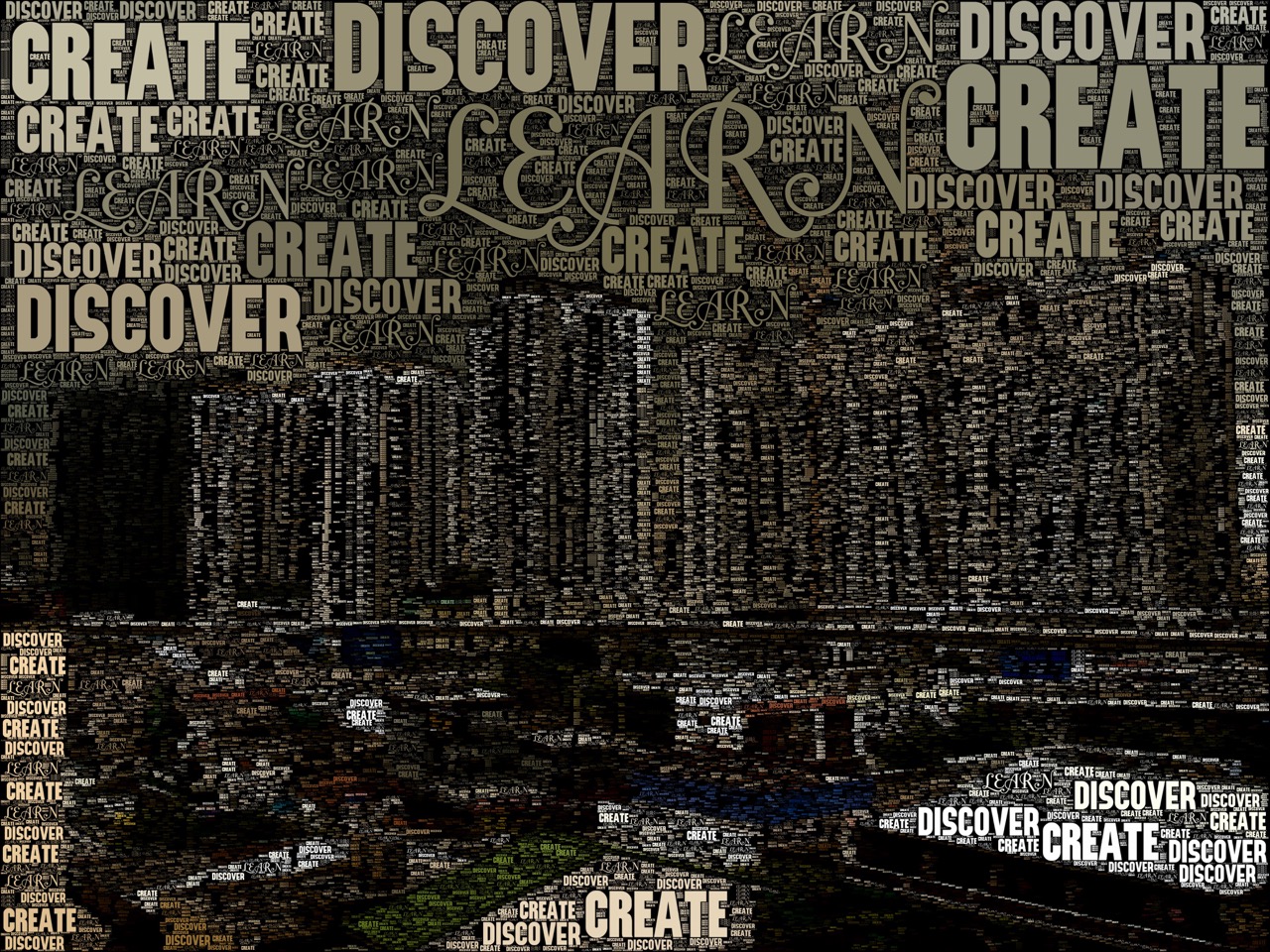WordFoto: iOS App for Adding Words to Images, with Real World Uses

AMITIAE - Monday 8 August 2016
|
WordFoto: iOS App for Adding Words to Images, with Real World Uses |
 |
|
|
By Graham K. Rogers
WordFoto opens with a default image overlaid with the words Word and Foto: a neat little bit of advertising of course. We can learn the ropes by using that image to begin with, but our own are much more satisfying. At the top of the panel (the app only works in portrait mode on the iPhone) are four icons: for import and export and i for Information. A camera icon to the left switches to the camera and a picture taken can be imported immediately when we press, "Use". The current word selection is applied automatically. An import icon takes us to the Photo library and an image is selected. Alongside this is a standard Arrow indicating exports: to the Photo Library, to Facebook and by email; as well as to other apps that the user may have installed. Here there is also an "Original Image" option with two choices: Save original image and save cropped original image, which is available when one of the tools is used. The tools are available via icons at the bottom of the screen: Crop, Words, Style and Finetune. These are shown with related icons. The first, Crop, shows the current image with adjustment points (similar to Apple's Cut and Paste), placed over an image. There are 4 options: Free, allowing us to select any size or part of an image; 1:1 (a square); 4:3; and 16:9. With the ratios, we may drag the section anywhere over the image to select one specific section; or we may resize the selection. The size relationship remains the same and the crop uses that part of the image.
Style offers a number of ways in which the image can be rendered with Preset Styles and Custom Styles. There are 8 offered as standard, with a "Classic Gray" giving a really lovely monochrome effect. The Custom tab enables changes to background and foreground, with choices that include colours, image changes, brightness, saturation, blur and many other subtle changes: a range that was unexpected in such a comparatively inexpensive app. Along with the custom settings, we may also select from 17 fonts. If this were not enough, Finetune (the last tool) has some additional sliders that make some adjustments to the finish of the image, with a button for "Re-render" also available.
ExportsI exported some sample images to the Photo album for transfer to the Mac, and also by email. I was offered 4 sizes from small (72KB) to Actual (6.4MB). An image in the Photo Library was shown as 3360 x 3360 with a file size of 6.4MB: the same as for the email size. This is a considerable change from when I first examined the app when exported images were smaller.When I transferred an image to the Mac from the app using AirDrop, this produced a massive file of 17.6 MB, which opened as an image of some 46"x 46" (the same image transferred to the Mac via iCloud was 6.4MB). The size is more than acceptable and would explain the quality of the Emirates menus.

CommentsWith images of this type (and size) one obvious use apart from personal web sites could be advertising. There might also be a way in which some images produced with this app might be used for teaching: that constant repetition of up to ten words does get the message through.When the app was installed on the iPad I found that it was now optimised for that device. When I first reviewed this it displayed in the normal x1 and x2 formats. I tried the app on the iPad Air 2 and the 12.9" iPad Pro, where it worked really well. On the iPad it displays either in landscape or portrait mode, although switched to portrait when I imported an image. Other than that, the way it works now (compared with its initial release), shows that much work has been done under the surface. This is a novel way to use photo output from images that we can produce (or store) on iOS devices (I think it works best on the iPhone of course). For me WordFoto is a keeper and I shall be trying this out a lot more as one more interesting method of using images on the iPhone. If it is good enough for Emirates it is good enough for me.
Graham K. Rogers teaches at the Faculty of Engineering, Mahidol University in Thailand. He wrote in the Bangkok Post, Database supplement on IT subjects. For the last seven years of Database he wrote a column on Apple and Macs. He is now continuing that in the Bangkok Post supplement, Life. He can be followed on Twitter (@extensions_th) |
|

For further information, e-mail to
Back to
eXtensions
Back to
Home Page